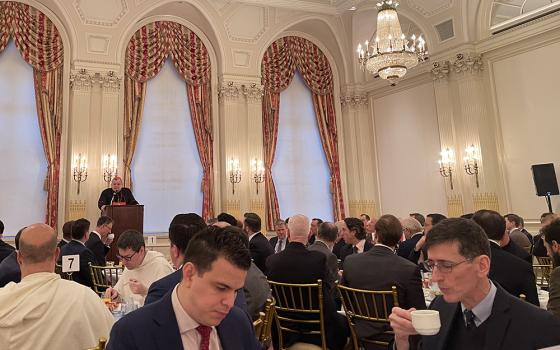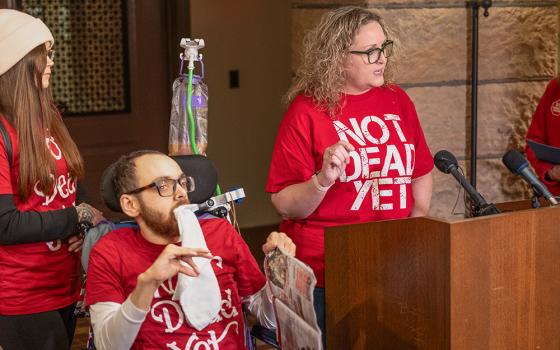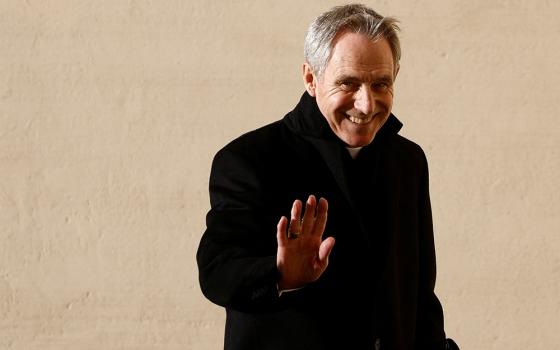In the way that the Second Vatican Council a half century ago was an acknowledgement that the terrain beneath old certainties had already begun to shift, the two-year Synod of Bishops on the family is an acknowledgement that enough has changed regarding that fundamental institution that it’s time to talk about it.
If the council were to serve as guide, the dynamic already unfolding in the current circumstance is understandable. For instance, few imagined prior to the council that the church would look kindly on other denominations, would admit that God could be active in other faiths, or conclude that Catholics should stop blaming Jews for Jesus’ death and, beyond that, should recognize our common Abrahamic roots.
Those were just a few of many changes in thinking regarding the church, its internal life and its relationship to the wider world that occurred during four years of deliberations. Fifty years later, we are still sorting out the implications of those changes -- and continuing resistance to them.
For some today, the certainties about the nature of family are as set as once was our animosity toward other religions. Where some once thought the church a “perfect society” in need of no updating or revision -- a conviction amply disproved by events of recent decades -- so Catholicism’s vision of perfection regarding the family seems unassailable to some today. One man and one woman forever, with as many children as might occur, the result of sex unimpeded by any artificial means, remains the God-ordained ideal and nothing can prevail against it.
Now some say the church has presented us with an ideal to which we should all strive, and then, as if to offer solace, add that achievement of that ideal is rare. Doesn’t that seem strangely cruel? Because in real life, Catholics use birth control and by very wide margins in many countries consider it a non-issue. Catholic marriages fail. Catholics marry outside the faith and face the tensions of respecting differing beliefs and practices under one roof. Divorced Catholics remarry. Children of divorced and blended families are inevitably, if inadvertently, swept up into the debates over church law, the requirements of annulments, whether the marriage they knew between their parents ever actually existed.
The question that the synod is forcing us to confront is if we have created a mistaken notion of the ideal, and the challenge is to create a new ideal that embraces new realities.
Gay children are no longer hiding. Catholic parents are no longer keeping their children in seclusion or denying the reality of homosexuality and other points on the spectrum of sexual orientation. “Disordered” is simply disregarded as a description of LGBT children.
Along with the turnabout regarding the LGBT community in the wider culture is an equivalent turnabout in thinking in the Catholic community. In fact, studies show that Catholics, influenced by the church’s social teachings, are one of the groups most tolerant of gays and lesbians.
Most U.S. Catholics are also fine with nontraditional families. What to do about same-sex marriage as evidently more and more cultures provide for it?
And on every side it seems that what remains of family life is under siege by elements of the wider culture: by secularism, consumerism, the frantic pace of modern life, virtual reality, economic stresses, and the unraveling of the binds that once held both families and neighborhoods together.
Those who begin and end the discussion with the line in Mark’s Gospel -- “What God has joined together, no human being must separate” -- seem to have an airtight position. There is little wiggle room in that utterance.
But just as unequivocal are Jesus’ sayings on riches and the poor, and on violence against another. We’ve managed to find lots of wiggle room in those cases.
The point is not to find wiggle room in current law, but to realistically face family life as it is in the 21st century and the remarkably different ways it is lived out around the globe.
The varied forms of family life in this era present “an obvious problem for the church, which holds up its model of a mother, father and children,” said Angrit Gerhardt of Germany’s Catholic Familienbund, or Family Union.
“Even among Catholic couples, however, real life often has little to do with church doctrine,” she continued. “The church now needs to see conditions as they really are, and offer pastoral support for people living outside its ideal.”
The good news in that same report is that even against the backdrop of family breakdown and “a radical change in value systems” over the last 50 years, “there’s evidence that young people still want lasting family relationships. The church is sustaining these aspirations -- and in this sense its teaching is still highly relevant,” said Maria Hildingsson, secretary general of the Federation of Catholic Family Associations in Europe.
Given the “Catholic ideal” of marriage and family and the definitive layer of church statutes governing that state in life, one might reasonably wonder why a synod would be called in the first place. What makes this interesting, however, and as unpredictable as synods of the past 30 years have been predictable, is the person of Pope Francis. He takes a nonjuridical approach to his flock, not throwing out the rules, but making them subservient to the exercise of mercy.
His understanding of “conditions as they really are” and his encouragement of robust discussion of issues and questions that previously would have been prohibited give hope that new pastoral approaches might accompany the law. Francis and the bishops attending the synod next month will have had at their disposal an unprecedented array of opinions and reactions from Catholics around the globe.
Let’s hope that the mix of good intentions, pastoral inclinations, a liberated Catholic imagination and the Holy Spirit might find some creative ways to welcome inside the tent many who would otherwise be marginalized.



